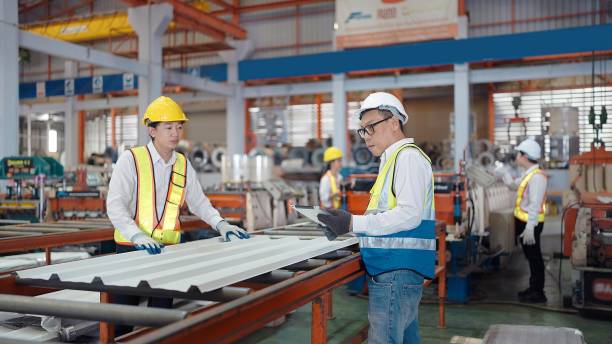2025 SUVs to Avoid: Models That May Not Be Worth Buying
As the automotive industry evolves, not all SUVs are created equal. While many 2025 models promise innovation and value, some fall short of expectations. For consumers planning to invest in a new SUV next year, understanding which models might disappoint can save significant time, money, and frustration. This guide examines several 2025 SUV models with potential drawbacks in critical areas like technology, efficiency, space utilization, and ride quality.

Models With Outdated Technology Features
Several 2025 SUV models continue to lag behind competitors in technological advancements. The Lexus GX series, despite its reliability reputation, maintains an outdated infotainment system that lacks the intuitive interface found in competitors. Similarly, the Jeep Cherokee’s entry-level trims offer minimal driver assistance features while competing models include these as standard. The Mitsubishi Outlander also struggles with technology integration, featuring systems that feel a generation behind more tech-forward alternatives from Hyundai and Kia. These technology deficiencies can significantly impact the ownership experience, particularly as advanced driver assistance systems and connectivity features become increasingly important to consumers.
SUVs With Poor Fuel Efficiency Ratings
Fuel economy remains a critical consideration for SUV buyers, and several 2025 models deliver disappointing performance in this area. The Chevrolet Tahoe and GMC Yukon continue to offer V8 engine options that struggle to exceed 16 mpg in combined driving conditions. The Toyota 4Runner, while praised for its durability, maintains an outdated powertrain that delivers fuel economy numbers more typical of SUVs from a decade ago. Even some newer entries like certain configurations of the Ford Bronco prioritize off-road capability at the expense of efficiency, with some versions averaging below 20 mpg combined. As fuel prices fluctuate and environmental concerns grow, these inefficient models may prove increasingly costly to operate compared to more efficient alternatives.
Models Struggling With Limited Cargo Space
Practical storage capacity is a fundamental SUV selling point, yet some 2025 models offer surprisingly constrained cargo areas. The Mercedes-Benz GLA, despite its premium positioning, provides only 15.4 cubic feet behind the rear seats—less space than many compact hatchbacks. The Mazda CX-30, while stylish, sacrifices utility with its sloping roofline, limiting both cargo volume and versatility for larger items. Even in the midsize segment, the Nissan Murano’s design prioritizes exterior styling over maximizing interior space, resulting in cargo capacity that falls well below class leaders like the Honda Passport and Volkswagen Atlas Cross Sport. For families or active individuals who regularly need to transport gear, these space limitations could prove frustrating.
SUVs With Lack of Comfort and Ride Quality Issues
Ride comfort represents another area where certain 2025 SUV models fall short. The Jeep Wrangler, while unmatched in off-road capability, continues to deliver a firm, sometimes jarring on-road experience with noticeable wind and road noise at highway speeds. The Land Rover Defender, particularly in short-wheelbase configurations, exhibits more body motion and harshness than luxury SUV buyers might expect. Entry-level trims of the Subaru Forester also suffer from inadequate sound insulation, allowing excessive road and engine noise to permeate the cabin. For daily commuting and long-distance travel, these comfort deficiencies can significantly diminish driver and passenger satisfaction over time.
Reliability Concerns Based on Previous Generations
Past performance often indicates future reliability, and several 2025 SUV models carry concerning track records. The Land Rover Discovery has consistently ranked below average in dependability studies, with electrical systems and powertrain issues being recurring problems. Similarly, the Alfa Romeo Stelvio, while engaging to drive, has demonstrated below-average reliability scores in owner surveys. The Volkswagen Tiguan has shown vulnerability to transmission issues in previous generations, raising questions about long-term ownership costs. For buyers prioritizing trouble-free ownership, these models may represent riskier choices compared to consistently reliable alternatives from manufacturers like Toyota, Mazda, and Hyundai.
Market Value and Depreciation Analysis
Understanding how quickly different SUV models lose value helps identify which represent poor long-term investments.
| SUV Model | First-Year Depreciation Rate | 3-Year Resale Value (% of Original MSRP) | Estimated Ownership Cost (5-Year) |
|---|---|---|---|
| Land Rover Discovery | 40-45% | 45-50% | $71,000-$78,000 |
| Alfa Romeo Stelvio | 38-42% | 48-52% | $58,000-$65,000 |
| Jeep Cherokee | 35-38% | 55-60% | $45,000-$50,000 |
| Mitsubishi Outlander | 33-36% | 56-62% | $38,000-$42,000 |
| Nissan Murano | 32-35% | 58-63% | $44,000-$48,000 |
Prices, rates, or cost estimates mentioned in this article are based on the latest available information but may change over time. Independent research is advised before making financial decisions.
Alternative Considerations and Better Value Options
Rather than focusing solely on models to avoid, consumers might consider alternatives that address the shortcomings highlighted above. In the compact segment, the Mazda CX-5 and Honda CR-V offer superior reliability records and more refined driving experiences compared to problematic competitors. For technology-focused buyers, the Hyundai Tucson and Kia Sportage provide advanced features at competitive price points. Those seeking three-row functionality might find better value in the Kia Telluride or Hyundai Palisade compared to less space-efficient alternatives. Taking time to research these alternatives can lead to more satisfying ownership experiences without necessarily increasing purchase costs.
When shopping for a 2025 SUV, looking beyond marketing claims to examine practical aspects like technology integration, fuel efficiency, space utilization, and comfort can prevent buyer’s remorse. By carefully researching these areas and considering alternative models that better meet your specific needs, you can make a more informed decision that provides better long-term satisfaction and value.




